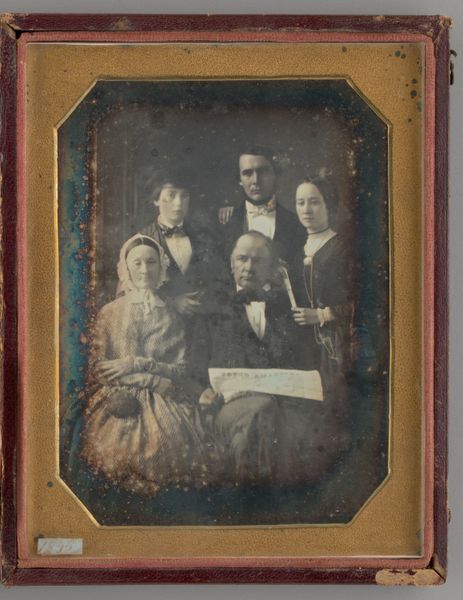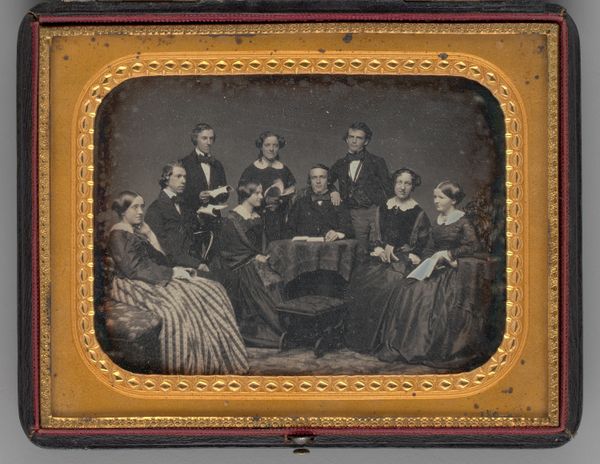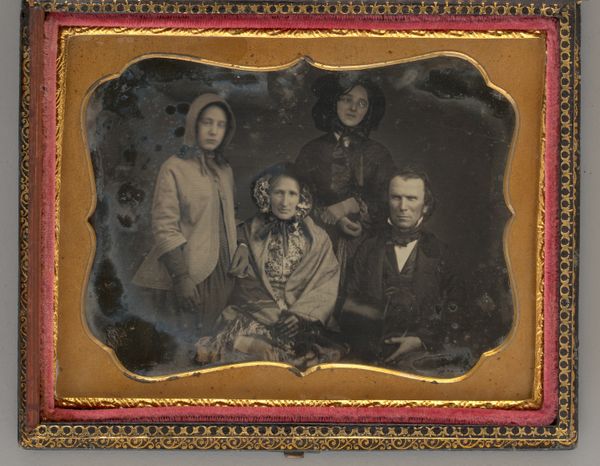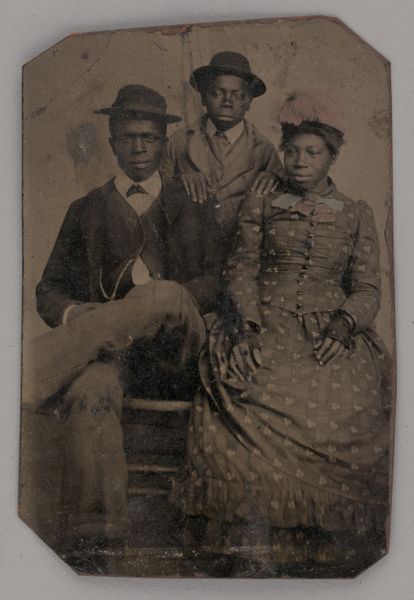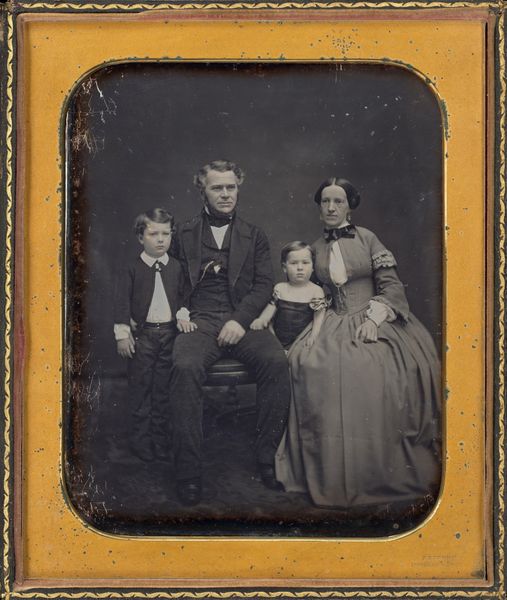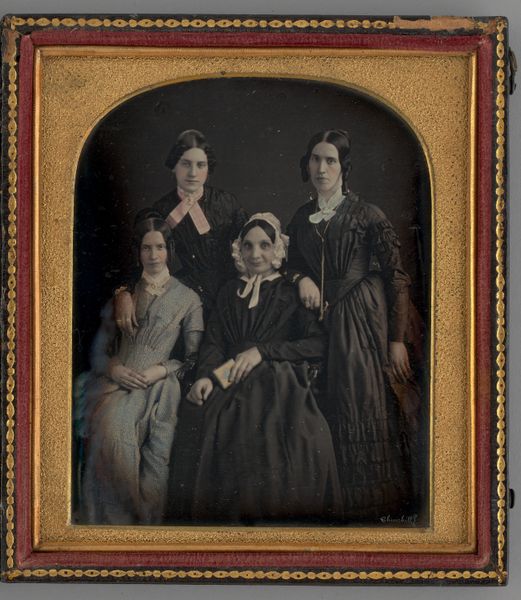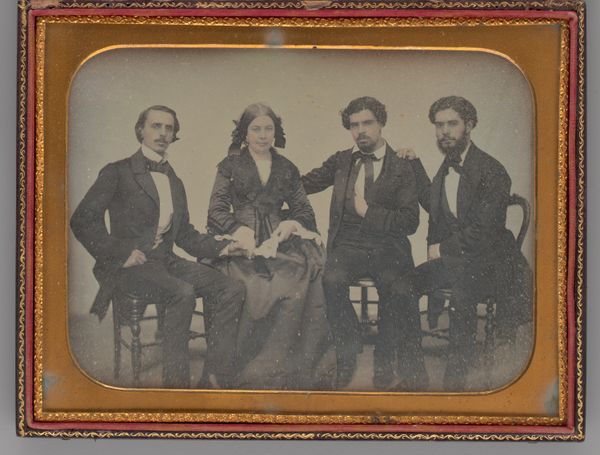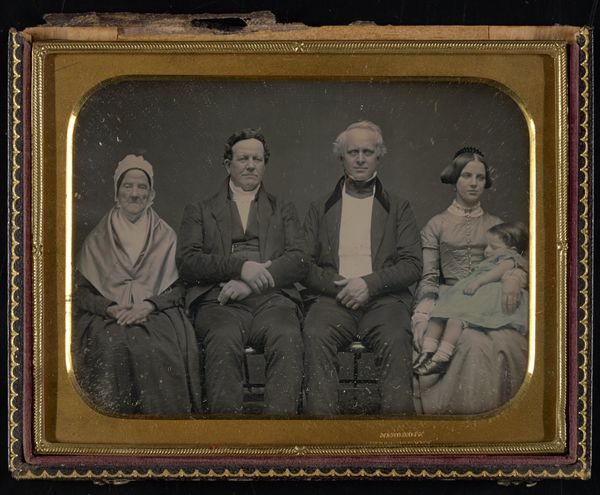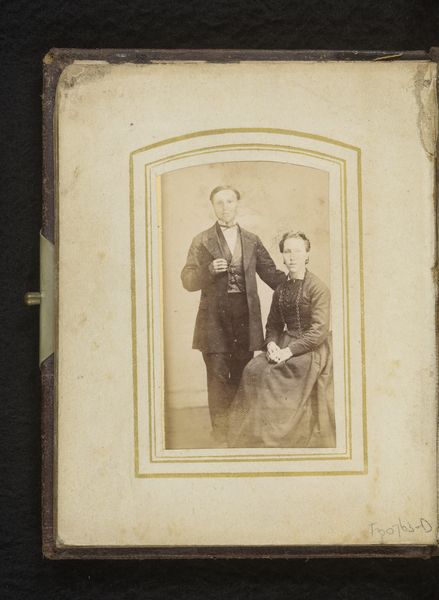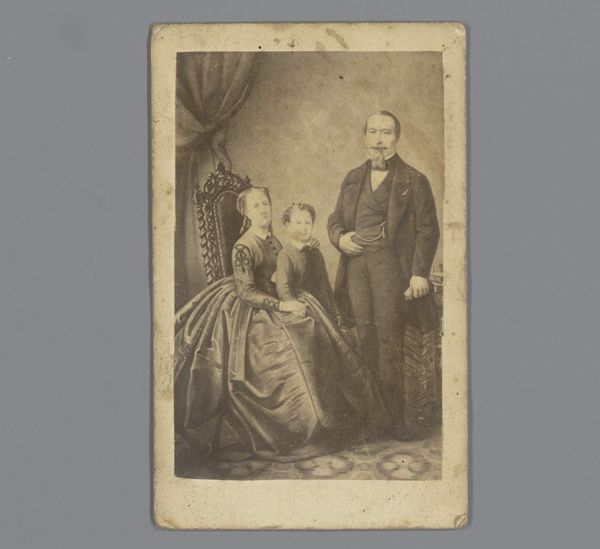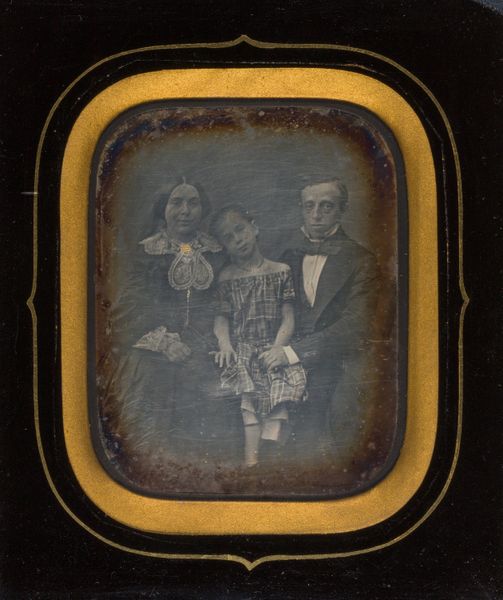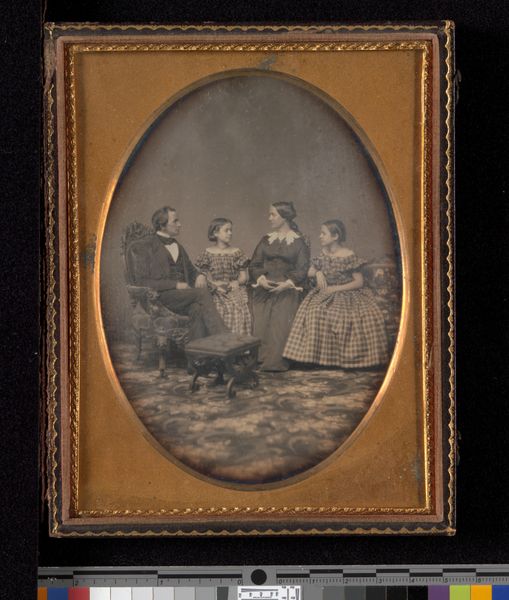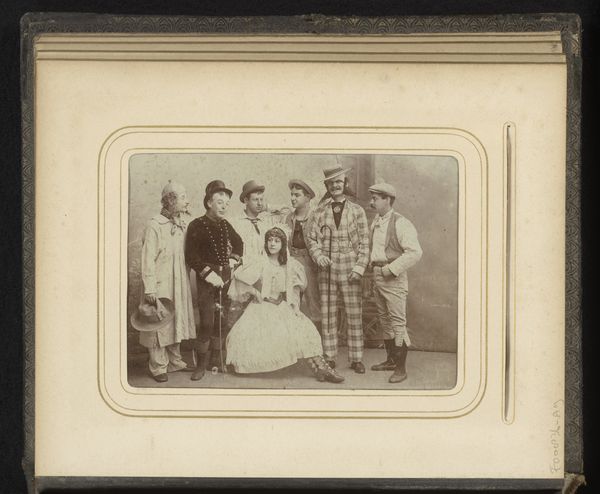![[Hypnotism] by John Adams Whipple](/_next/image?url=https%3A%2F%2Fd2w8kbdekdi1gv.cloudfront.net%2FeyJidWNrZXQiOiAiYXJ0ZXJhLWltYWdlcy1idWNrZXQiLCAia2V5IjogImFydHdvcmtzL2FjMGE5ZTRhLWQ5ZmMtNDEyMi04ZWFlLTA5MWE5YzhkYmVlOS9hYzBhOWU0YS1kOWZjLTQxMjItOGVhZS0wOTFhOWM4ZGJlZTlfZnVsbC5qcGciLCAiZWRpdHMiOiB7InJlc2l6ZSI6IHsid2lkdGgiOiAxOTIwLCAiaGVpZ2h0IjogMTkyMCwgImZpdCI6ICJpbnNpZGUifX19&w=3840&q=75)
daguerreotype, photography
#
portrait
#
daguerreotype
#
photography
#
group-portraits
#
romanticism
#
men
Dimensions: Image: 13.3 x 18.4 cm (5 1/4 x 7 1/4 in.)
Copyright: Public Domain
Editor: So, this is *Hypnotism*, a daguerreotype likely created between 1843 and 1847 by John Adams Whipple. Looking at this early photograph of these five formally dressed individuals, there's this rather unsettling, dreamlike quality, especially with their eyes closed. How should we interpret the staging and poses here? Curator: This is an incredible early example of photography capturing not just an image, but also a specific social moment imbued with belief and wonder. The closed eyes are central; in the 1840s, mesmerism, or what we now understand as hypnotism, was gaining traction as a scientific and therapeutic tool, promising access to hidden realms of consciousness. Look at the composition—the figure standing behind with his hand placed on the seated man’s head. What does that gesture evoke for you? Editor: It feels like a transmission, a deliberate attempt to exert influence or provide comfort, maybe? A link of power… or perhaps healing? Curator: Exactly. It embodies both control and care, reflecting the complex power dynamics inherent in mesmerism. These group portraits were often commissioned to document these "hypnotic" sessions. Notice the closed eyes replicated throughout the photograph: What symbolic value might exist when one shares a likeness where sight--that which is taken for granted and perceived as reliable evidence-- is missing? Editor: Hmm, is it the loss of visual cues and the embrace of the inner mind as something knowable? Curator: Precisely! Whipple's daguerreotype isn't just a portrait; it’s a symbol-laden artifact revealing anxieties and aspirations related to the unseen, consciousness, and control, capturing a specific cultural moment ripe with nascent ideas about psychology and its influence. Editor: It’s fascinating how one image can speak volumes about scientific curiosity, power dynamics, and cultural beliefs of a specific moment in time. Curator: Indeed. It serves as a reminder of how early photographic images reflect evolving psychological concepts that intertwine culture, memory, and the human quest for the intangible.
Comments
No comments
Be the first to comment and join the conversation on the ultimate creative platform.
